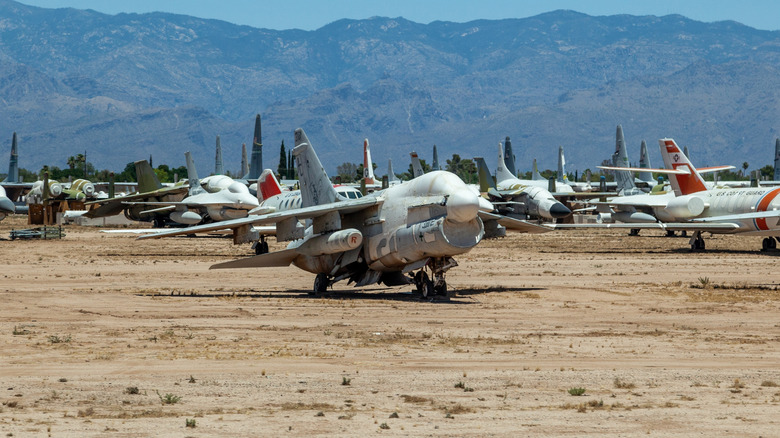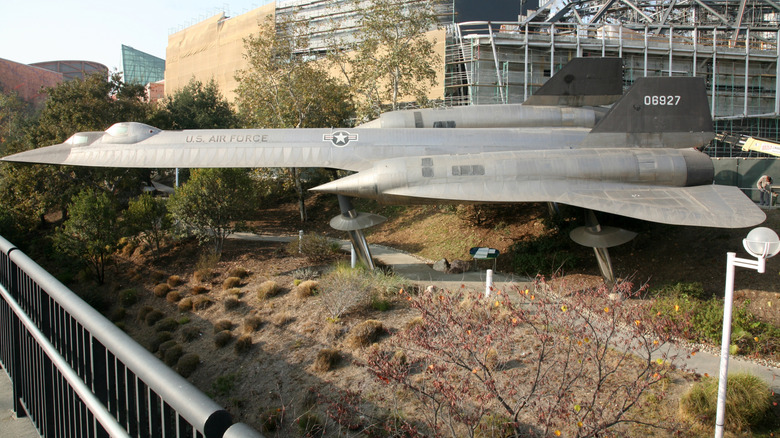What Happens To Used Fighter Jets Retired By The USAF?
When a fighter jet reaches the end of its service life with the U.S. Air Force, disposing of it isn't as simple as parking it in a hangar and walking away. These high-performance machines are built for intense missions and cutting-edge speed, so what comes next isn't always predictable.
After retirement, many used Air Force jets are sent to and stored in the Arizona desert, where the dry climate helps preserve aircraft for the long haul. The 309th Aerospace Maintenance and Regeneration Group (AMARG), also known as "The Boneyard," is where thousands of these jets are either stored for reuse, stripped for parts, or eventually dismantled. Some planes are kept in a standby mode, ready to be pulled back into service if needed. Others serve as donor aircraft, helping keep active-duty planes flying by supplying hard-to-find components.
In some rare cases, used fighters are sold to museums, airshow performers, or even private collectors, but only after going through a strict demilitarization process. This means all weapons systems and classified tech must be removed before a sale is allowed, and not every aircraft is up for grabs. For example, the F-22 Raptor, the stealthiest fighter jet ever built, is completely off-limits to foreign buyers due to national security restrictions. These rules apply to both retired and active jets to protect sensitive capabilities, especially when dealing with modern or highly advanced fighters.
Budget pressures are driving jet fighter retirements
The Air Force's decision to retire a fighter jet isn't just about age; it's also about whether it still makes sense to keep it flying. As maintenance demands grow and spare parts become harder to source, older jets require more time, money, and effort to maintain. In some cases, crews strip parts from one used aircraft to keep another running. Meanwhile, mission-capable rates have slipped, with only 62% of the fleet ready to fly on an average day in 2024. Faced with shrinking readiness and rising costs, the Air Force often sees retirement as a necessary move.
Even before the current push to retire large groups of aging aircraft, the Air Force had already started phasing out some of its most recognizable fighters. The F-22 Raptors, once the crown jewel of the fleet, are being gradually pulled from service as the Air Force shifts focus to newer, more advanced jets and tighter budgets. At the same time, the fast and dependable F-16 Fighting Falcons are retiring sooner than expected due to maintenance issues and the arrival of modern replacements.
But the pressure to choose between keeping legacy jets operational and investing in future platforms is now accelerating the pace of those retirement decisions. This includes retiring every remaining A-10 by the fiscal year 2026. The goal is to free up resources for next-generation programs like the F-47, while also rectifying ongoing issues with newer models like the F-35.

